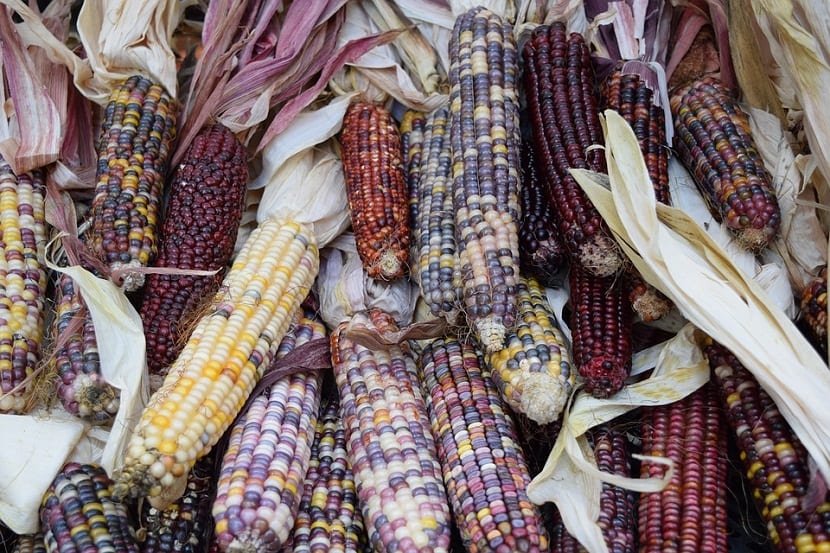
Glass Gem is how this variety of corn is known that has a very peculiar characteristic, and that is its grains develop in different colors, varying between blue, green, red, purple and black, among others.
The colorful corn dates back to a territory that is now known as Oklahoma, where Carl Barnes, farmer and breeder, having Cherokee ancestry and motivated by his grandfather to know its roots and having in his possession these seeds belonging to the natives, began to cultivate it obtaining this colorful harvest.
Features

In general, this corn grows in two or three ears per stalk, so the harvest is expected to be about 100 to 150 ears, with each package containing 50 seeds. The height that each silver reaches will be subject to the amount of water with which it is watered, being the general measure of growth of 1,8 meters. However, it can manage to reach 2,7 meters in height. The most predominant color is blue corn.
This variety of corn does not tolerate strong frosts well, however it can grow and develop very well anywhere it can receive direct sunlight and has a warm climate. For the planting of the seeds it is recommended that this be once the frosts are overusually in late spring.
Farming
They should be planted 2,5 cm deep and the distance between each one should be at least 15 cm, also being planted in blocks of at least three rows, unlike doing it in a single row, since in this way we will help the plants have a good pollination. In the same way, the planting can be carried out following the traditional native way, which is using three or four seeds per hole made, with a distance of about 7 or 10 cm between each planted group.
Plagues and diseases
Pests that can affect the corn crop are gray, green, white worm, wire worm, corn aphid, spider mite, green gnats, and corn borer. And among the diseases that can affect corn crops we have the corn blight, mosaic virus, ear smut, bacterial rot and corn rust.
To prevent pests, the use of insecticides that can combat them effectively is recommended, however, and before using any insecticide, you should first consult a professional who will advise you on the best treatment to tackle this problem. Instead, diseases can be prevented by fungicides or control them by the use of systemic products, which are quite effective.
Getting the seeds of colored corn in the United States or Canada is very easy, since you can do it by purchasing online with a package of 50 seeds and whose price is affordable for everyone. Each sale is about 60 or 80 grams per person; This is due to the fact that the seed bank has a great demand for these, so the supplies used for production are limited depending on the season.
Uses

This corn is used by many people to make corn flour that they later use to make tortillas or semolina thanks to its high starch content.
Also, if the corn is harvested when it is dry and brown, it can be used to make popcorn, however, it will not have its characteristic colors during that state, since the grains have a lower level of humidity so it is easier for them to break at the time of warming up. There are those who also use it for its colorful grains, being used ornamentally by many people.
This very special plant has had a great acceptance in recent times despite the fact that requires very specific careHowever, due to the nature of its colors, most growers believe it is worth buying and growing.